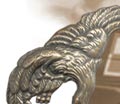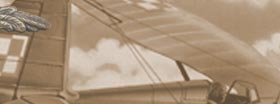The Polish Autumn
Akcja Wisla 28th April 1947
Operation Vistula
On 23rd April 2002 an extraordinary and important event took place in terms of reconciliation between Poland and the Ukraine. Poland’s President Aleksander Kwasniewski apologized to the ethnic Ukrainians for the Polish Communist Government’s appalling behaviour in their forced expulsion from land in eastern Poland in 1947. In the ‘West’ it revealed an event, which had largely been unheard due to the ‘Iron Curtain’ of the Soviet backed Cold War hell.
In a letter to the National Remembrance Institute (IPN) and participants in the IPN-organized conference on Akcja Wisla held in Krasiczyn near Przemysl (Peremyshl), President Kwasniewski wrote:
"On behalf of the Polish Republic, I would like to express regret to all those who were wronged by [this operation]. ... The infamous Operation Wisla (Vistula) is a symbol of the abominable deeds perpetrated by the Communist authorities against Polish citizens of Ukrainian origin. ...
Polish Background
Europe was war-weary with destroyed economies and hardly a city or family had been left unscathed with millions of displaced persons inhabiting camps
that were once used to house POWs in such appalling conditions that President Truman ordered an official investigation.
Beria reported to Stalin on 17th May 1945 (Hastings, 2005) that twenty AK units compromising of 6,000 men and women were in a desperate battle of
survival against the communist regime’s armed forces in eastern parts of Poland. In the melee of active former partisans were 4,000 men of the
Ukrainian Patriotic Army (UPA) operating in the remote Bieszczady Mountains on the new border between Poland and the Ukraine. Stalin used the
opportunity to send 5 NKVD regiments and in addition 3 regiments of NKVD Frontier Guards to ‘liberate’ the countryside from the ‘bandits’. The UPA was
eventually crushed in 1947 by a coalition of the newly formed Polish Communist Army, Soviet and Czechoslovak units. About 0.5m survivors of
Operation Wisla were forced to migrate to the artificially re-created provinces of Warmia and Mazury. This oppressive action has remained a
‘dark’ episode in Poland’s recent history.
In effect the region was fighting a civil war (Davies, 2001; 2003) from 1944 until 1947. The ‘West’ knew little of it and had abandoned its ally
Poland to concentrate on rebuilding their war shattered economies and hanging onto shrinking empires. However, the term ‘civil war’ masked the true
objective and that was to use brute force to subjugate those who dreamed of freedom and democracy. Davies (2001; 2003) estimated there might have
been up to 40 to 50,000 underground fighters in the field with the Soviet backed security forces losing 18,000 men.
Former members of the AK continued to harass the newly installed communist government by attacking all symbols of Soviet backed oppression. The
Polish United Workers Party was sufficiently weak and unable to control the array of opposition parties without the backing of the Soviets. Such was
Stalin’s desire to suppress all political opposition no one was safe. Premier Stanislaw Mikolajczyk of the Government in London had returned to
Poland to offer his services in the post war transition and in the end had to flee for his life as the ‘Trial of the Sixteen’ in Moscow between 18th
and 21st June 1945 indicated the extent to which Stalin would stoop.
On July 26th 1944 Osóbka-Morawski as the chairman of the Polish Committee for the National Liberation (PKWN) signed an agreement with Minister Molotov.
The contents of the agreement have never been fully published, but were the death warrant for the AK, the Peasant Battalions and the National
Armed Forces. While Stalin was keen to tidy up his western border with Poland, he was more concerned about removing any opposition and the 58th Clause
of the Soviet Penal Code enabled him to execute them. The Osóbka-Morawski – Molotov agreement enabled the opposition to be removed from Polish soil and
jurisdiction. The ‘show trial of the ‘Sixteen’ was staged, as a warning to all opponents and to this day it is difficult for anyone to explain how
the ‘West’ stood by and allowed kidnapped (and tortured) foreign politicians to be sentenced under Soviet law who had not committed any legal
transgression on Soviet soil. Such were the desperate lengths that Stalin even arranged the kidnap of Gen. Tadeusz Komorowski’s wife from France
and interned in a labour camp.
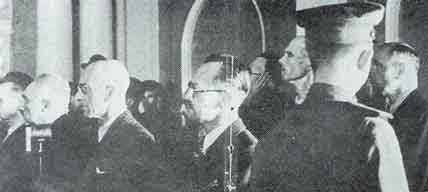
On January 19th 1945 Gen. Leopold Okulicki (code name Niedzwidek) released the AK from their oath in an attempt to dissolve the army, however, it was too late to save them from
special court-martials which saw 1.5 million Poles sent to the NKVD run camps at Vortuka, Kolyma, Kaluga, Donbas, Kamchatka and Diagelvo to name just a few. The few that did survive were
released in the mid 1950s.
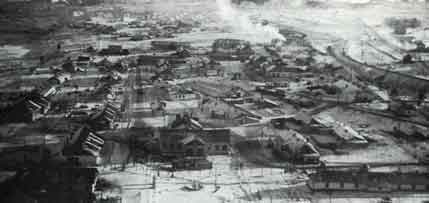
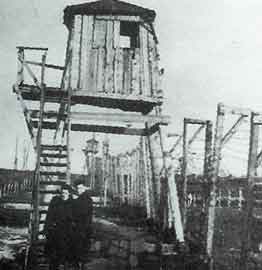
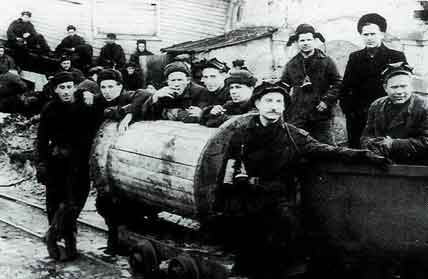
In June 1945 a few remnants of the AK formed the secret Freedom and Independence Organization (WiN) who continued with the open struggle for independence without the support of the ‘West’
operating in the Bialystok and Lublin area (Davies, 2003). Other active units included the National Armed Forces (NSZ) who were operational in the Holy Cross Mountains near Kielce in central
Poland who fought their way out of Poland and crossed Czechoslovakia to meet the US army. Further south in the Podhale Region, the Citizens Militia fought in the forests of the Tatra Mountains.
Led by Józef Kuras (Captain Fire) they fought running engagements throughout 1946 to 1947.
It has been suggested in a number of articles that WiN had support from the Organization Gehlen (the former Nazi Intelligence Unit, which had been reconstituted under the control of the USA’s CIA)
under Operation Sunrise. The prime purpose of the OSS/ CIA was to support and infiltrate agents into Soviet Bloc countries. However, the NKVD infiltrated WiN and subsequently ran an
effective deception operation through a double-cross system so that by 1952 hundreds of agents had disappeared with thousands of supporters betrayed,
particularly by Stefan Sienko.
While a much-reduced WiN continued to operate for many years, its effectiveness was marginalized and a potential underground movement all but vanished.
While Poland was presided over by Boleslaw Bierut between 1947 until his death in Moscow in 1952, any former associate of the AK had little chance of escaping imprisonment and trial.
Bierut who had himself survived Stalin’s Great Purge in 1938 while training in Moscow at the school of the Communist International was asked to head the Polish Workers Party in
1943 (Stalin had purged the KPP and only a few hundred had survived). During the war he was head of the Krajowa Rada and was instrumental in the Soviet takeover of Poland and the
installation of a puppet government. While he professed opposition to the ‘Trial of the Sixteen’, he had conveniently abdicated responsibility through the Osóbka-Morawski – Molotov agreement (which
allowed First Secretary Gomulka to take responsibility), but unconditionally supported the show trials of General Stanislaw Tatar and former AK commanders and members of the Catholic Church.
He had realised while head of the Polish Committee for the National Liberation (PKWN) that all opposition needed to be quashed and control the population. Therefore, he welcomed the Soviet support
for Akcja Wisla and any form of interventionist support so that there was no other deviation from the new political model for Poland. Such was the enthusiasm for the neo-Stalinist show trials and
deportment that Poland replicated the gulags of the Soviet system (Applebaum, 2003). Bierut died in his beloved Moscow of heart failure in March 1956.
Deportations from Upper Silesia to the Soviet Union from 1945 to 1949 were not limited to political prisoners, former members of the AK or any others who were regarded as ‘subversive’ to the
new regime by the ‘liberators’. Thousands were ordinary civilians who were included and sent to the mines as part of Poland’s contribution in reparations for the rebuilding of
the Soviet economy.
|
